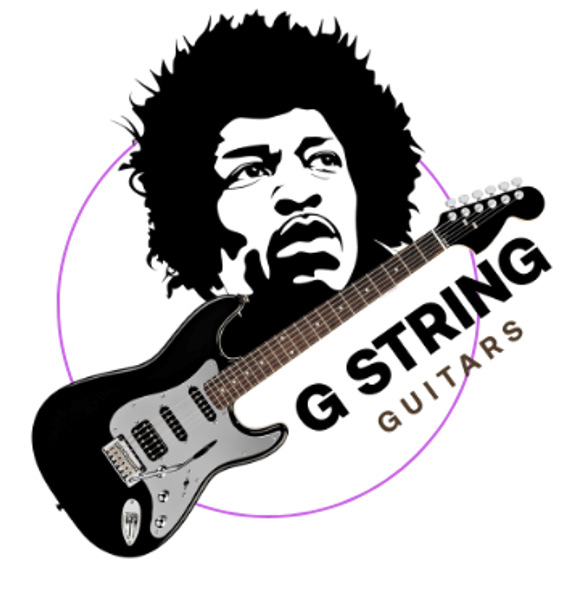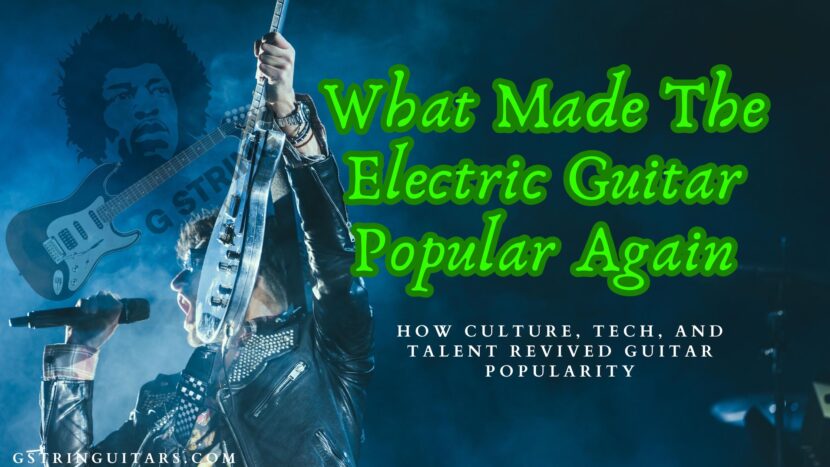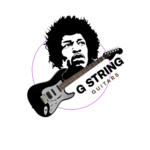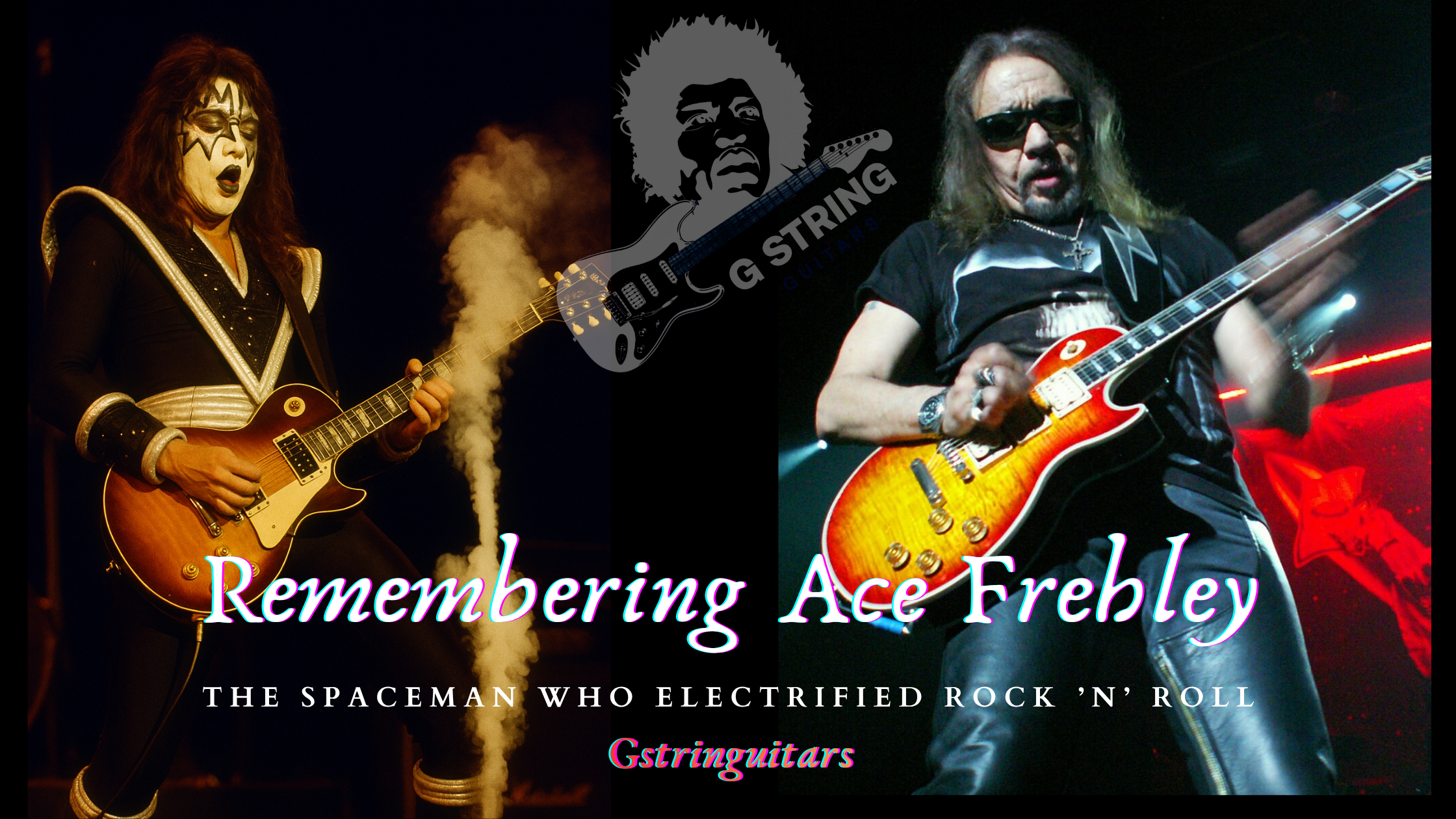The Guitar’s Resurgence is Fueled by Viral Social Media Performances, Modern Guitar Heroes, and Accessible Virtual Lessons. Explore how Cultural Shifts and Technology have Revived this Timeless Instrument.
This Post May Contain Affiliate Links
In compliance with the FTC guidelines, please assume that some of the links on these posts and sites are affiliate links (Amazon or others) from which I may earn a small compensation/commission from sales of certain items at no extra cost to you from qualifying purchases.
Anytime you see a link that looks like “astore.com, paid link, #ad, #CommissionsEarned or Amazon/Amazon.com/ca,”… it can be assumed that it is an affiliate link.
To learn more, follow the link below.
Making The Electric Guitar Popular Again
In the 80s, guitarists like Eddie Van Halen, Randy Rhoads, Steve Vai, and Slash were some of the ultimate rock gods.
Their electrifying solos and larger-than-life stage presence defined a generation.
Rock guitarists weren’t just musicians but global symbols of youthful freedom, mastery and coolness.

However, as the 1990s approached, rock music underwent a musical shift, pushing the instrument back a few decades and raising the question, “Will we ever see the rock guitar’s journey back to prominence?“
Thankfully, despite the instrument’s ups and downs in cultural significance, it has emerged stronger than ever, resonating with musicians and fans worldwide.
From the rise of new Guitar heroes to groundbreaking technological advancements, the Guitar is seeing a revival that may extend past the stress-purchase quarantine bounce. (More on this later)
This is a story worth celebrating.
Let’s explore the reasons behind its renewed appeal and what has made the Electric Guitar Popular again.
Rebels Of The Big Hair Bands
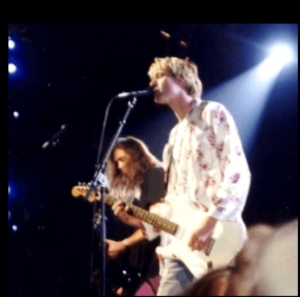
Nirvana performing live at the 1992 MTV Video Music Awards with Kurt Cobain and Krist Novoselic- Image courtesy of Wikipedia and is licensed under the CC BY-SA 2.0
In the 90s, Grunge took the stage with a raw, unpolished sound that became the new voice of rock with a rebellious approach, and mainstream music was no longer centring around the big hair bands.
Part of the Pop Punk defiance was in not playing Guitar solos in their songs, maybe because the new wave of players was more interested in the overall energy of the music and less about mastering an instrument.
Bands like Nirvana and Pearl Jam brought a more relatable vibe, with other genres of Hip-Hop and Beyoncé-style pop also starting to dominate the airwaves, owning the hearts and wallets of millennials and Gen Z’rs.
People were exploring other forms of artistry and self-expression, and these cultural shifts played a massive role in pushing the traditional ‘Guitar God‘ into the shadows. The old-school rock star persona began to fade away, losing its attraction.
Declining Sales Of The Instrument
With the celebrated virtuosos of Rock Guitar disappearing off the charts, the instrument started becoming irrelevant to the end user.
According to Music Trades (a research organization that tracks industry Guitar data), reported that sales of the instrument have diminished by approximately one-third in the last decade.
With so many 20th-century Guitar deities passed, such as Jimi Hendrix, Jeff Beck, or the ageing Jimmy Page and Brian May, the newer Guitar Gods could no longer drive the instrument’s sales and marketing.
During this time, many top brands, such as Gibson (a 127-year-old Guitar company), who singlehandedly created the iconic and celebrated Les Paul, filed for Chapter 11 bankruptcy protection on May 1, 2018.
But when you think the Guitar has seen its day, along comes a new audience for the instrument in the most unlikely of places, and how something so unexpected can bring back what was almost forgotten.
Enter the ‘Guitar Hero” video game series.
Guitar Hero: A Resurgence
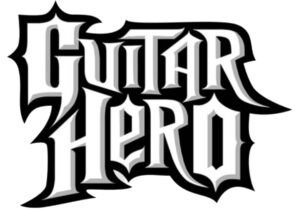
The original Guitar Hero logo Image courtesy of Wikipedia and is licensed under the Public Domain
When this game debuted in November of 2005, it reconnected a new audience with the thrill of playing iconic rock songs with a unique Guitar-shaped controller, allowing gamers to simulate leads/bass and rhythm across a wide selection of songs.
Players needed to hit coloured fret buttons on the controller and strum in time with the on-screen notes to earn points and energize the virtual crowd.
The game incorporated elements of actual Guitar playing, delivering an immersive musical experience.
Feeling The Spirit Of Rock
Think about the appeal.
You’re not just pressing buttons.
You’re getting into the groove of tracks from legendary bands like Aerosmith and Metallica.
For many young players, this was their first taste of Rock Guitar, and it hooked them along with a virtual stage, getting them to “feel like rock stars.”
This simulated Guitar Revival was not just a flash in the pan but a cultural phenomenon.
Guitar Hero single-handedly returned Rock Guitar music to the spotlight, inspiring a new generation of gamers to pick up real instruments.
It turned a near-forgotten piece of rock’s legacy into something fresh, exciting, engaging, and interactive, reviving a cultural appreciation for Guitar music and making it relatable.
The third installment, “Legends of Rock,” went on to sell 1.4 million copies in the US in the first week, featuring cameos from Tom Morello (Rage Against The Machine/Audio Slave) and Slash. (GnR and Velvet Revolver)
The spirit of Rock Guitar was alive and well, with the actual Guitar Gods giving their “thumbs up.”
Real Guitar Hero Yngwie Malmsteen
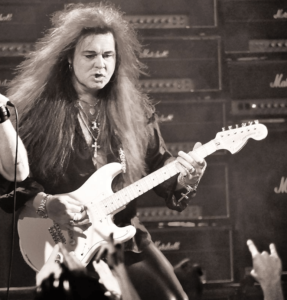
Yngwie Malmsteen playing live in Barcelona July 5, 2008, Image courtesy of Wikimedia Author –Alterna2 http://www.alterna2.com and is licensed under the Creative Commons Attribution 2.0
Guitar Hero video games also expose more kids to more technically challenged music, which perfectly corresponds to the gaming scenario.
“I actually think Guitar Hero is a good thing because it introduces kids to music. I now see in the audience when I play now every night there’s like, very young kids; this is a great thing.”
The game’s latest release was in October 2015 with Guitar Hero Live.
Electric Guitar Sales Comeback
As the pandemic disrupted entire company sectors, threatening to sink industries, the Guitar experienced a surprising resurgence.
Guitar veteran manufacturers stated record-breaking sales, fueled by a wave of new players seeking a quarantine companion, psychological solace, and creativity during lockdowns.
This surge in interest propelled Fender’s sales to historic levels.
Andy Mooney, CEO of Fender, called 2020 a record year, with e-commerce and beginner gear sales leading the charge, saying…
“We experienced mid-30% growth annually during the pandemic,”
“We’ve broken so many records.”
Not Just Fender
Other leading online music retailer giants, such as Guitar Center and Sweetwater, experienced significant growth, reaching triple digits even after store closures.
Sweetwater reported $1.4 billion in sales for 2021, a testament to the booming interest in music-making.
Other Manufacturers like Martin and Taylor also struggled to keep up with demand. “It’s crazy,” said Chris Martin, whose family company saw a shocking rebound after an initially dire March.
Gibson echoed similar spikes. Its CEO, JC Curleigh, attributed the trend to a renewed public desire for authenticity and live instruments.
Strumming & New Learning Through The Pandemic
New Surge Of Players
The COVID-19 pandemic led to a surge in new Guitar players.
Fender estimated that approximately 16 million people in the US learned to play the Guitar during the first two years of the pandemic, with many of them being young, tech-savvy, and diverse.
This new surge of players all sought ways to stay sane and productive at home.
They focused on picking up a new hobby or skill to get motivated without dealing with the usual distractions of working or binge-watching on streaming platforms like Netflix.
With all that extra time indoors and a new Guitar in hand, online tutorials became wildly popular.
Looking To Social Media
Social Media Platforms like YouTube, Instagram, or TikTok help beginners get started by sharing progress, tips, and performances, creating a sense of community among isolated players.
Encouragement and feedback from followers on these platforms helped many stay motivated when times got tough, along with becoming a hotspot for enthusiasts to share, collaborate, and grow their skills.
The sense of accomplishment from mastering a new song made the otherwise monotonous days feel rewarding, and it was not just about learning chords but also about building a personal connection to music and the instrument.
Social Media proved a goldmine for encouraging young players to play the Guitar and spurred a legion of young shredders.
Online Guitar Lessons & Apps
Taking it a step up from Social Media, Online classes for remote Guitar learning also surged in popularity during the pandemic, offering interactive lessons, real-time feedback, and gamified experiences to keep learners engaged, along with it being fun and challenging.
Fender and Gibson launched a Play App, which included a network of online resources, including song tabs, bite-sized lessons, trackable progress, a song-based curriculum, instructional Guitar lessons, exclusive content, and virtual Guitar tech support.
These online resources and apps successfully reduced the high dropout rates that would generally occur among new players; additionally, Fender diversified its product marketing to attract a broader audience by embracing players from various backgrounds and skill levels.
New Demographics For The Instrument
With the instrument typically male-oriented in the past, the demographics started to change, with 45% of new users being female, nearly 20% of the newcomers being less than 24, and 70% being under 45.
The industry’s rapid recovery highlights the instruments’ enduring appeal.
The study also showed that embracing the Guitar was a therapeutic outlet for this demographic of newer/younger players.
Guitar For Your Well-Being
This boom was not just about using free time productively.
Some folks even found solace in their Guitars as a tool for mental health.
Playing music can be a great stress reliever, helping people to channel their emotions creatively.
During global uncertainty, the Guitar became more than just an instrument; it was a mentor and a means of coping, highlighting its role beyond entertainment.
It became a companion, providing comfort, a sense of achievement, and a much-needed distraction when the world around us felt unpredictable.
Doctor Approved

Neuroscientist Daniel Levitin explained that learning an instrument fosters brain health, builds new neural pathways, and promotes optimism and calm.
This underlines the guitar’s enduring appeal as both a creative outlet and a mental escape, benefiting anyone of any age.
Many newcomers to the instrument seemed to be looking for an oasis of calm in a turbulent world.
He wrote that learning the Guitar is a forward-looking process that kindles hope and optimism and helps regulate stable mood chemicals like serotonin and dopamine.
Advancements & Accessibility
Regarding Guitars and Technology, the duo has played a crucial role in revamping and refreshing the instrument’s image for today’s music lovers.
We now have SMART Guitars with tech-driven features, including built-in digital effects and amplifiers and innovative technology that syncs with your phone and can transform a simple riff into complex compositions in the digital space.
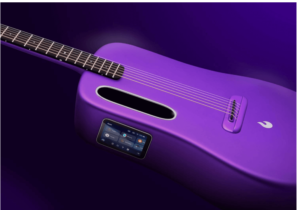
The LAVA ME 4 Acoustic Electric Guitars Carbon Fiber Smart Audio Guitar with 3.5-inch TouchScreen, HILAVA 2.0 System. Image courtesy of Amazon.ca
These Guitars are great-sounding and affordable for beginners. They are also quality instruments that are more accessible than ever, lowering the barrier for those interested in learning without clearing their bank account.
Home Studios
Like the SMART Tech, home studio setups have become more viable, allowing budding musicians to experiment and record professionally from their bedrooms.
It’s all about unleashing creativity without the constraints.
Innovations in recording software have expanded the possibilities even for experienced players.
This technology has ensured that the Guitar remains relevant and exciting.
Nostalgia
In today’s world, Nostalgia is a powerful force, and the Guitar taps into it beautifully.
People are rediscovering the instrument’s charm, pulling at the heartstrings of old fans and new listeners in many places, from movies to concerts.
For example, blockbuster movies like Bohemian Rhapsody have reintroduced Queen to a legion of new fans who can admire the genius of Brian May’s Guitar playing all over again. (See image)
Following up with Reunions and live rock shows of iconic bands like Guns N’ Roses, Def Leppard or Motley Crew.
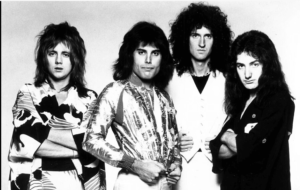
Queen in 1975. From left to right: Roger Taylor, Freddie Mercury, Brian May, and John Deacon-Image courtesy of Wikimedia- Author Koh Hasebe; Distributed by Elektra Records-and is licensed in the Public Domain
Slowly but surely, after over a decade of irrelevance, the Guitar solo has started to enter the cultural conversation again.
Existing Rock Guitar Icons Meet Pop Stars
Guitar Solos In Mainstream Music
Collaborations between Guitarists and artists from different genres, like Nuno Bettencourt and Rihanna, open fresh avenues for creative exploration.

Nuno Bettencourt with Extreme at Tons of Rock open-air festival, Oslo, 2024-Image courtesy of Wikimedia Commons-Author is Birdesigns – And is licensed under the CC BY-SA 4.0
Bettencourt played with Rihanna in 2009 during the Last Girl On Earth Tour as her lead Guitarist and musical director, along with subsequent tours…
- Loud: 2010
- 777: 2012
- Diamonds World; 2013
With Bettencourt embracing this gig, not only will it introduce the legendary player to an entirely new audience, but these partnerships will also bring Guitars back into the limelight.
The collaborations have resonated with younger listeners, proving that Guitar music isn’t confined to any genre. Instead, it’s a universal language that continues to evolve and inspire new audiences.
Even with the music industry shifting towards a more diverse mix of genres, the instrument is finding its place within this broader tapestry, and these forgotten Guitar Gods have returned to highlight the instrument’s versatility and reaffirm its place in the modern music scene.
What’s Next?
Fresh New Faces
While many full-time musicians felt detached from their instruments due to the pandemic, a new wave of up-and-coming Guitar players are well on their way to joining the professional scene.
The next generation of players being created by the influence of the lockdowns, whether simply practising within the confines of their bedrooms, garnering a social media following or performing on the live circuit, suggests a bright future for the mainstream return of the Electric Guitar, showing that the instrument’s legacy isn’t just a thing of the past.
These modern Guitar heroes are carving their own paths in diverse music landscapes.
Trailblazers mark every era of Guitar music, and today’s scene is no exception.
Young, vibrant players are making waves, blending virtuosity with contemporary sensibilities.
What’s exciting is how these contemporary players infuse various styles and genres, creating something fresh.
Artists like Nita Strauss and St. Vincent are reshaping the image of a modern Guitar virtuoso through a unique blend of electronic and rock elements.
Their innovative approaches are widening the appeal of Guitar music beyond traditional boundaries.
They are redefining what it means to play the instrument in the modern age.
Social media is now used to amplify their reach, turning Instagram solos and TikTok jams into viral sensations.
These artists aren’t just playing; they’re innovating and crossing music genres—bringing Guitars into pop, hip-hop, and electronic music.
Fans see these players as relatable and inspiring, igniting a fresh desire to pick up the instrument.
Final Thoughts
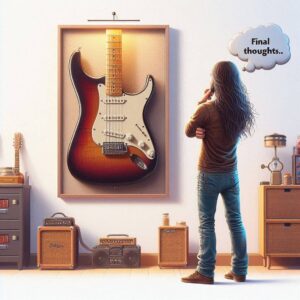
Its resurgence proves that while trends may come and go, the instrument’s place in music and culture is eternal.
It’s not just about making music; it’s about reclaiming a voice.
This instrument tells stories without words and offers endless pathways for creativity and artistic flair.
The Guitar secures a lasting role in music’s future by embracing these cultural shifts.
Guitar For Everyone
Roughly 712 million people, or 10% of the world’s population, have played the Guitar at some point.
On a more personal level, I believe the instrument is and will always be popular because it is not just for the stage; it’s for everyone who dares to pick it up, embrace the challenges, and spur on with passion.
“Success is not being on stage or making successful albums; success is playing Guitar, period.
I do not give a fuck if you are playing in a garage or if you are playing in your basement, online, or in a cover band.
Success is putting this instrument on for the love of playing it.
When you put this thing on, it’s a superpower; nobody can fuck with you, so don’t you forget it.”
Nuno Bettencourt
Benefits Past The Guitar
Finally, the instrument will not only provide you with years of joy and fulfillment. It has been proven to offer numerous other benefits beyond the mental well-being discussed above and into your work and professional life.
You could argue that the Guitar Gods are dead. Or you could look at this Evolution and say that the Guitar Gods did their job.
Either way, I am happy to report that this iconic instrument is here to stay.
Did You Like This Article
Check out my post on explaining Active vs Passive Pickups
Also…
Leave your comments below if you want me to review a favourite guitar, player or topic.
Stay the course, keep playing, and see you in a few weeks.
Blog image courtesy of Stock Snap – Photo by Austin Neill
Slash Image by Alejandro Alvariño from Pixabay
All AI images created by the Author on Microsoft Bing Image Creator
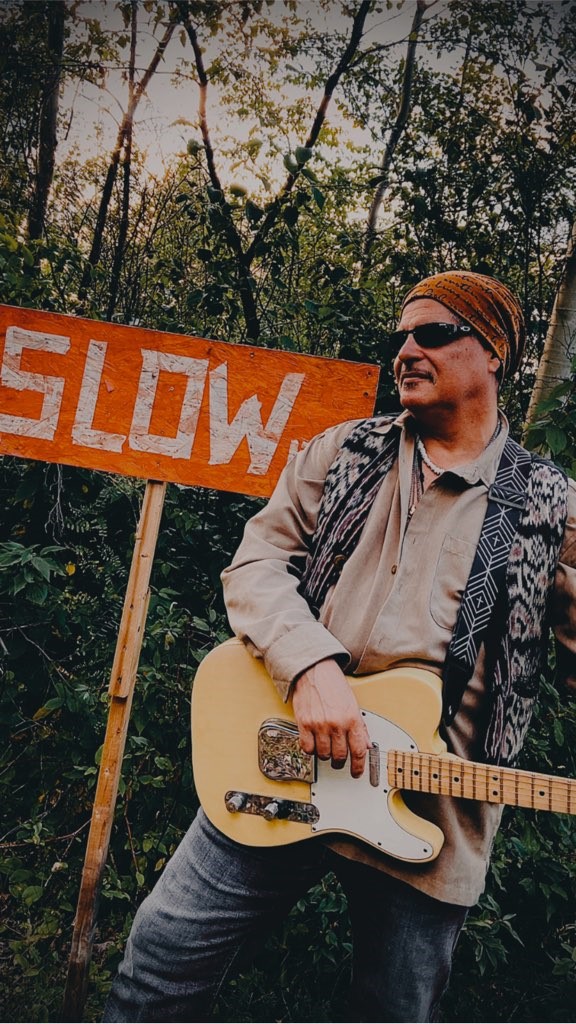
Starting A Journey At 7 Years Of Age, The Love For The Guitar Only Became Stronger Going Into My Teens. This Leading To An Exciting Time Of Teaching, Performing, And Recording. Join Me Now As We Can Bring The Love Of This Instrument To Other Musicians Globally.
